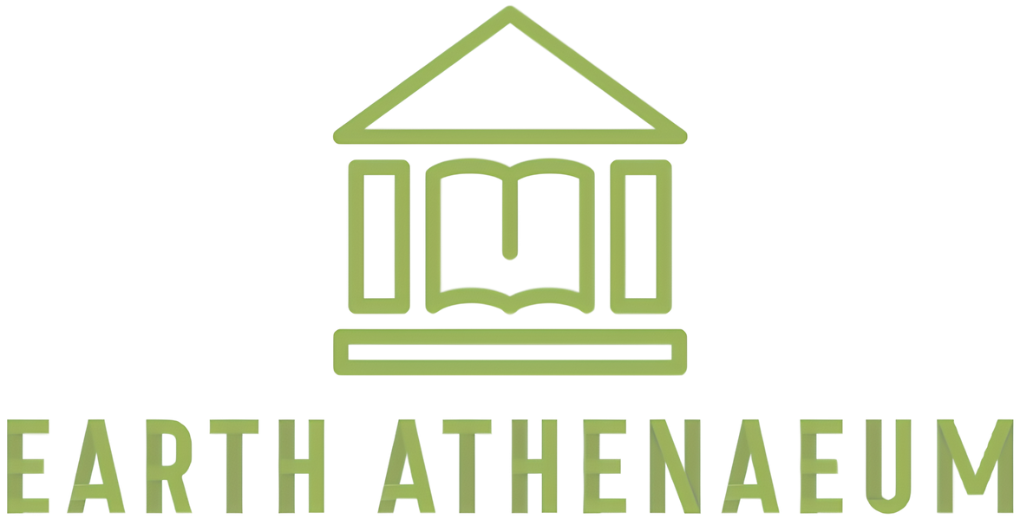Mining
Mining is essential for providing resources for our products, devices and fuels; however, mining practices suffer from a range of issues. Being, invasive, with huge water footprints and environmental damage, exacerbated by geopolitics, lack of regulations and desire for low costs[1][5].
Mining requires the clearing of vast areas of land, the process of which releases greenhouse gases, destroys vegetation and scars ecosystems in a lasting manner. The act of mining itself requires lots of resources including energy, water and manpower[2][3][4].
The quantity of greenhouse gases released per unit of mined material varies massively with the abundance of said material. Where scare materials require substantially higher proportional energy usage – ‘mining a kilogram of diamond produces around 800,000 kg CO2e compared to a kilogram of a highly abundant mineral such as iron which produces only about 2 kg CO2e” [3].
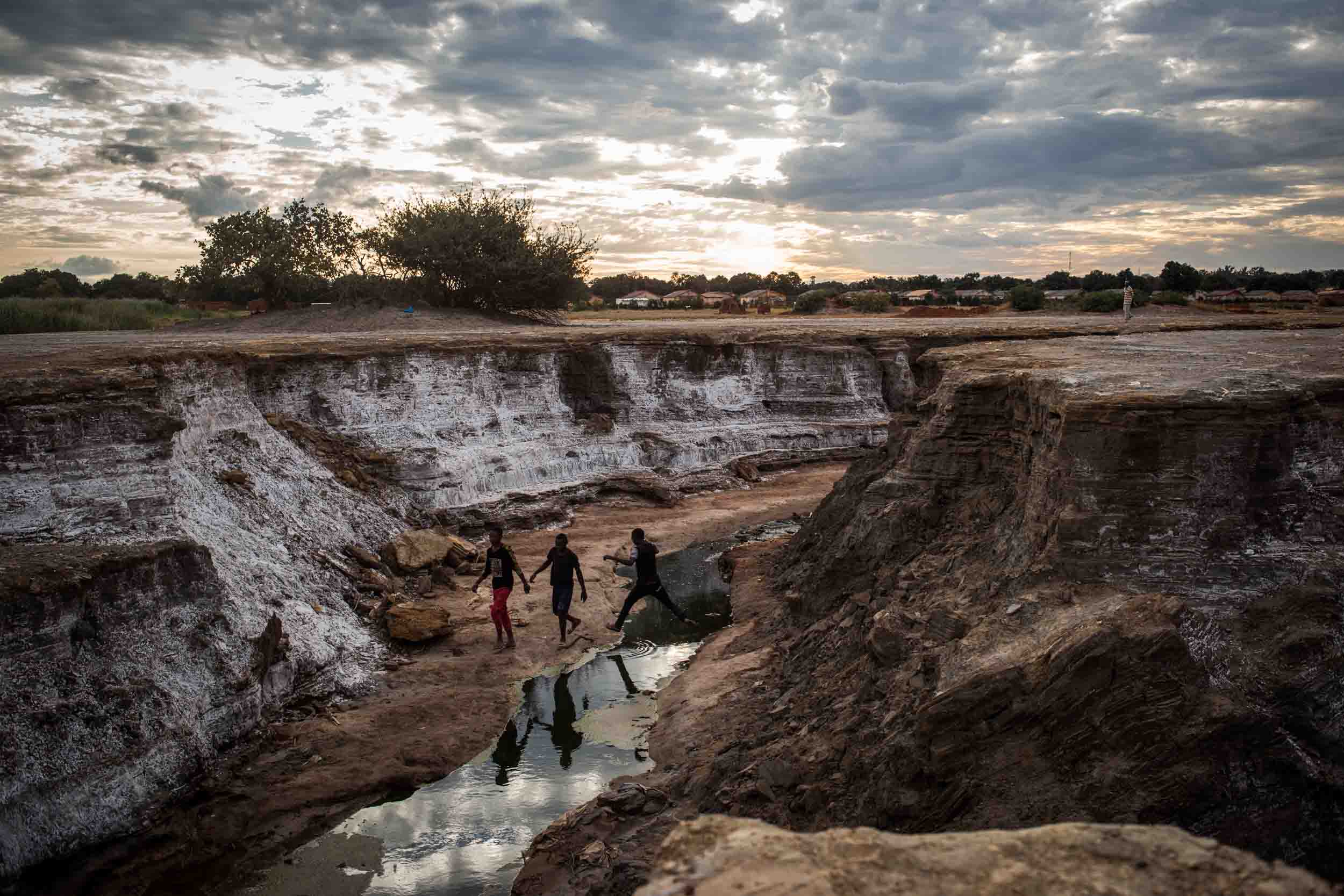
Children Walk in Old Mines – Source: WashingtonPost [5]
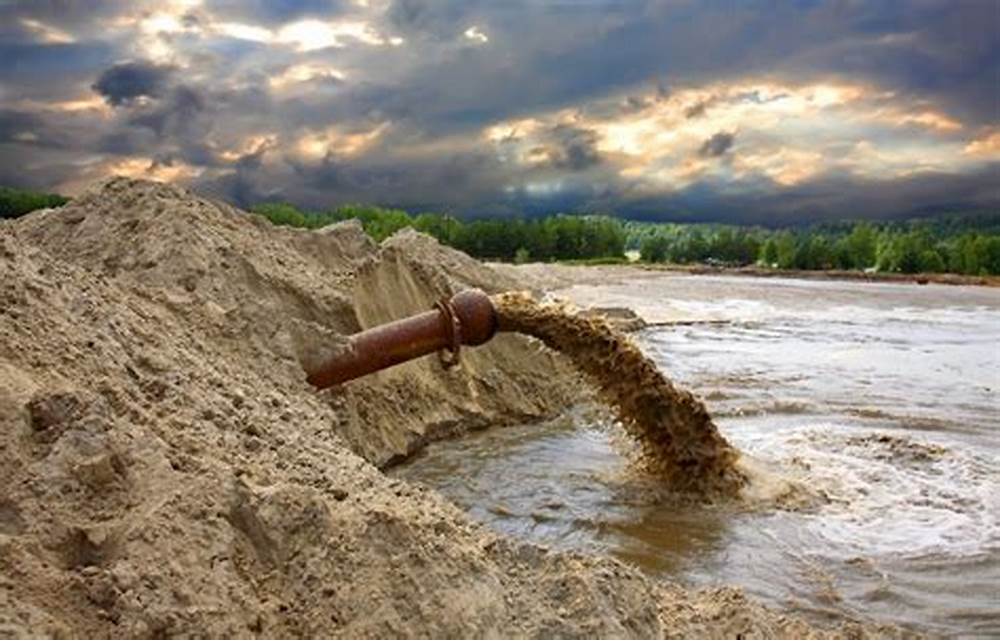
Mining Waste Water – Source: AZOMining [6]
Water Usage
Another harmful factor of mining is its large water requirements. Mining and mineral processing necessitate heavy water use for many different practices, including ‘dust mitigation, removing soluble particles, sieving and separation processes, and in creating tailings dams for waste management’[4]. For many stages the water can be reused and recycled, however other stages such as spraying to remove airborne dust will lead to pollution of the water, essentially wasting it. This water use and water wastage reduces availability/access for local people to drink and use, causing avoidable water stress[4][6].
Impacts of the water usage can be minimised by using saline instead of freshwater, as this is not drinkable and has limited applications in other industries, currently 47% of the water used in this industry is being quality saline water[6].
Land Use Change
A part of mining that is not often considered is the land use change. Along with clearing vegetation the land changes due to needed infrastructure such as transport limks and mining camps. ‘The infrastructure created by mining operations in remote, untouched landscapes can lead to improved access to these regions which may result in further human-caused disturbance to the local ecological systems.’ Of course, the severity of these impacts is highly dependant on the geography of the site, for example mining for iron in Gabon rainforests has more devastating impacts than the same in the deserts of northern Australia[4][7].
To mitigate these impacts the mining industry could improve and increase techniques such as underground mining, with a focus on minimising waste and the ecological scarring of the process[4][7].
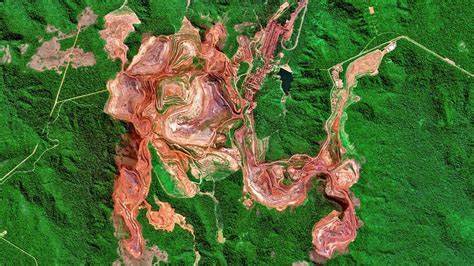
Scarred Land – Source: BBC [7]
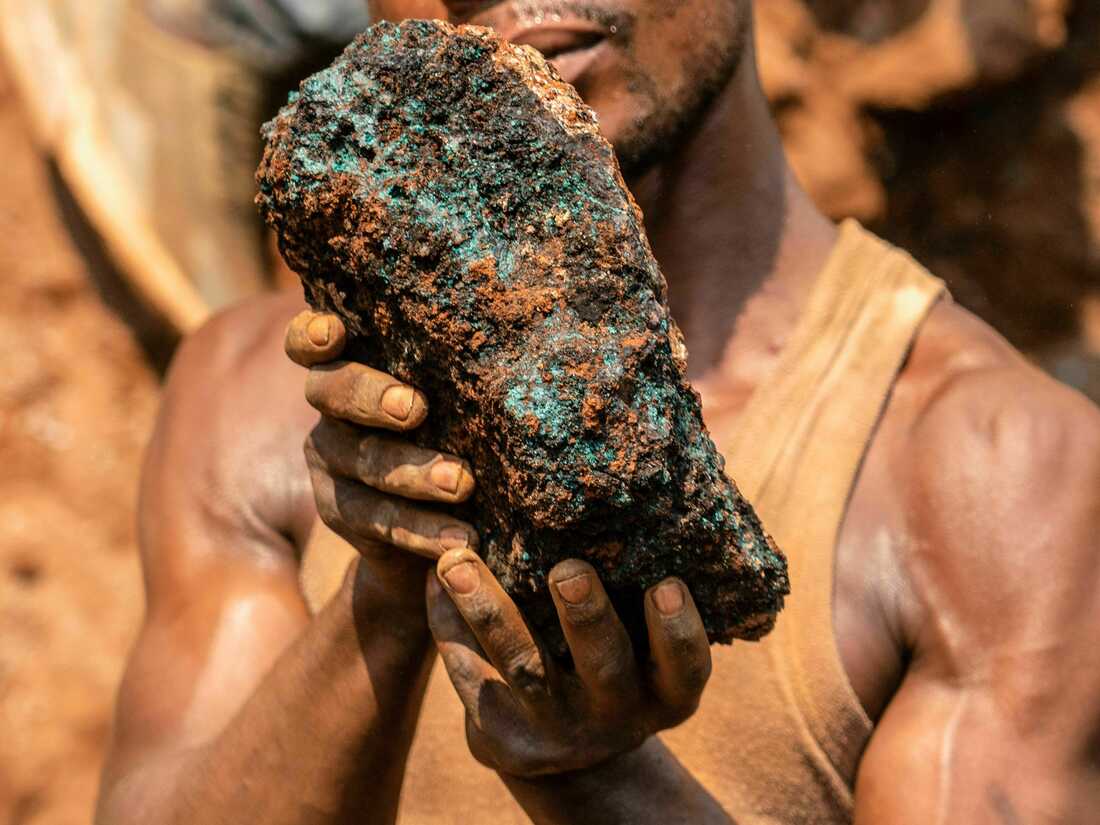
Modern Day Slavery (1) – Source: NPR [8]
Geopolitical
Mining has a history of dangerous conditions, health concerns and violence, and unfortunately this is still the case today. Due to the recent demand and surge of electric vehicle production valuable mineral mining is finally being put under scrutiny. Cobalt, as a key mineral in EV batteries, is experiencing a sustained surge in demand. The largest cobalt supplier is the Democratic Republic of Congo (DRC)[5]. The supply coming out of the DRC has two different sources: a biproduct of large-scale mechanised copper mining or hand dug via the efforts of local people (artisanal mining). This artisanal mining accounts for around 25% of the worlds production and suffers from the huge issues mentioned previously[5][6].
Artisanal miners in the DRC have to work in atrocious conditions and often suffer a variety of health issues. This is a result of common accidents, overexertion, exposure to toxic chemicals and gasses and violence. However, these miners are so reliant on the income of these mines that they have no choice but to bare the poor working environment. To make impactful changes, the emphasis needs to be on companies purchasing the cobalt exports.[1][4][8] Unfortunately this is still an active battle – ‘Despite pledges from companies to increase transparency regarding their cobalt sources and refineries or pledges to buy exclusively from other countries, very little in the conditions on the ground in the DRC have changed.'[1][4][10]
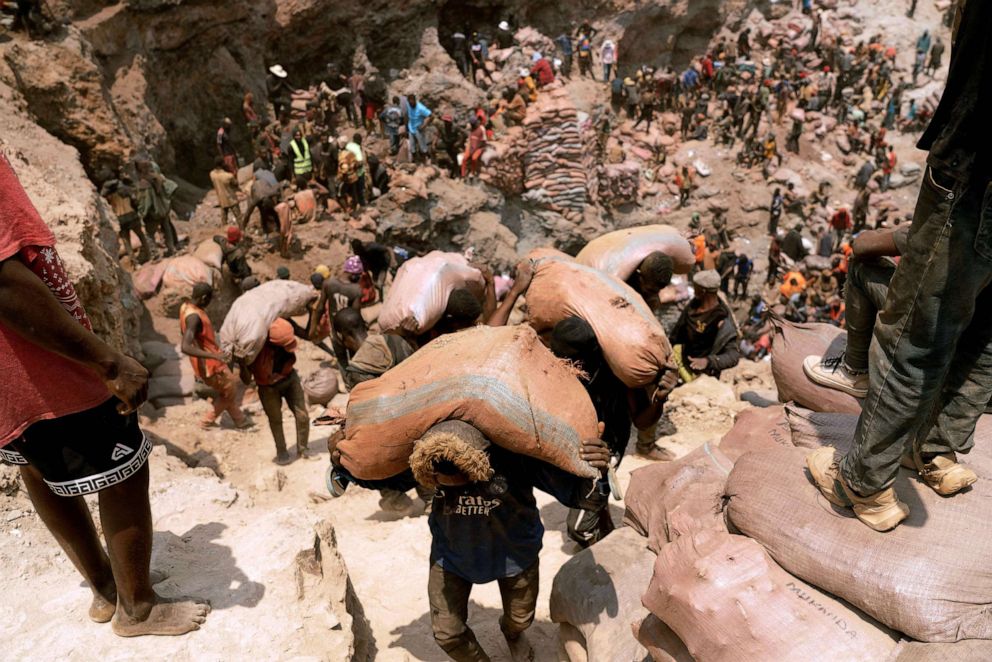
Modern Day Slavery (2) – Source: NPR [8]
Exploitation and Child Labour
This 2023 report exposes how the expansion of mining operations has forced people out of their homes and taken over the landscape. This mining takes over with both artisanal and industrial mines is fuelled by the enslavement of local men, women and children. With regions of the Eastern DRC now guarded by armed militias to control this trapped workforce[8][9].
Child labour is a historic issue in resource extraction within third world countries, shockingly this is still a major concern with the DRC’s cobalt supply chain. To combat this the U.S department of Labour “Combatting Child Labor in the Democratic Republic of the Congo’s Cobalt Industry” (COTECCO) project exists to address child labour in the DRC’s cobalt supply chain. “The COTECCO efforts include raising awareness of the challenges and opportunities to combat child labour; increasing governmental enforcement of child labour prevention; improving the private sector’s monitoring and remediation of child labour violations in the cobalt supply chain; and supporting efforts to enhance implementation and enforcement of laws, policies, and action plans that address child labour”[9][11][12].
While some progress and awareness has been made – with 28 companies adopting remediation efforts – the majority of the cobalt mining industry is unregulated. For our ‘green’ vehicle transition to be truly green, it needs to be good for the environment and good for the people involved in all stages, therefore major steps must be taken as we adopt ICEV alternatives[11][12].
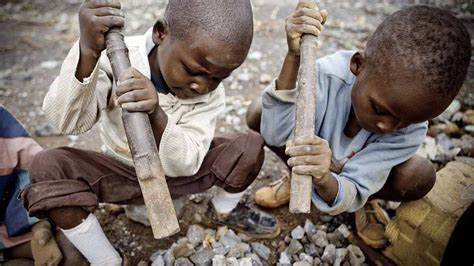
Children Mining – Source: NexusNews [11]
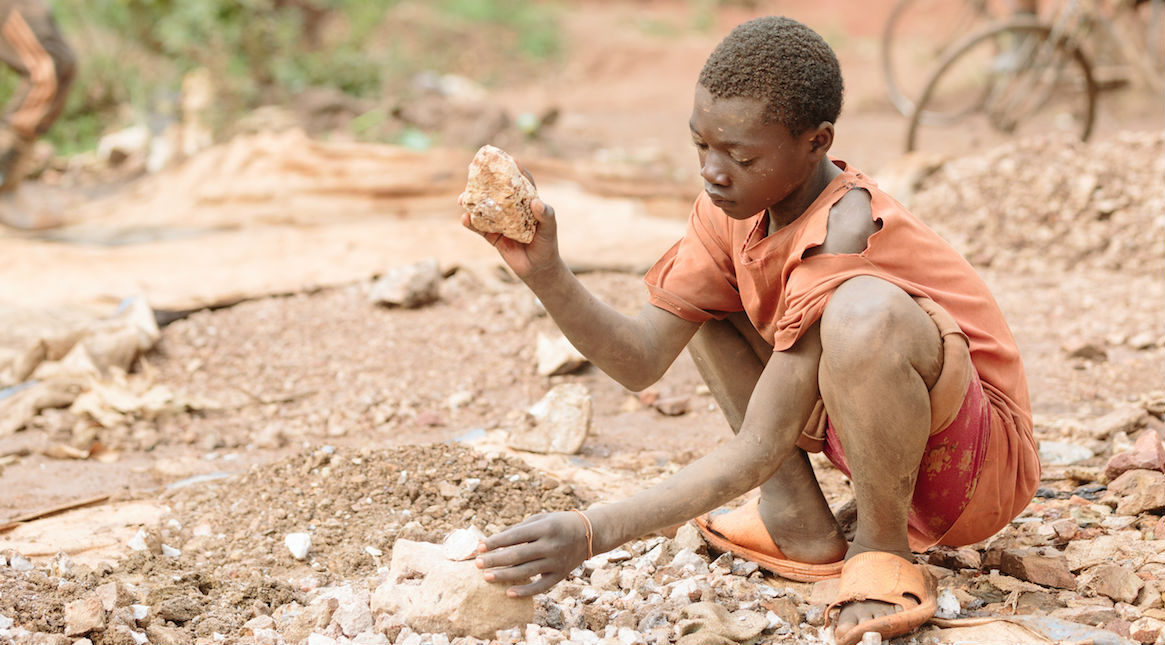
Child Labour – Source: StopChildLabour [12]
Get in Touch with Us!
We’d love to hear from you. Whether you have feedback, suggestions, or want to share insights related to sustainability and environmental truth, your voice matters. At Earth Athenaeum, we believe in open dialogue and collaboration to uncover and explore the realities behind green initiatives and corporate claims.
If you have questions, ideas, or simply want to connect, feel free to reach out — we’re here to engage, listen, and learn together.
Reference List And Further Reading
[1] – Venkat K. Cobalt Mining in Congo: Environmental Health, Safety, & Human Rights [Internet]. The Climate Club. 2024. Available from: https://www.theclimateclub.co/environmental-healthblogs/347zlomifb9x9jsyogvi4kymlynxfb
[2] – Amnesty International. DRC: Powering Change or Business as Usual? [Internet]. Amnesty International. 2023. Available from: https://www.amnesty.org/en/documents/AFR62/7009/2023/en/
[3] – Witchalls S. The Environmental Problems Caused by Mining [Internet]. Earth.org. 2022. Available from: https://earth.org/environmental-problems-caused-by-mining/
[4] – Murray A. Cobalt Mining: The Dark Side of the Renewable Energy Transition [Internet]. Earth.org. 2022. Available from: https://earth.org/cobalt-mining/
[5] – Mucha L, Frankel TC, Sadof KD. The hidden costs of cobalt mining. The Washington Post [Internet]. 2018 Feb 28; Available from: https://www.washingtonpost.com/news/in-sight/wp/2018/02/28/the-cost-of-cobalt/
[6] – Davey R. How is Decarbonization Increasing Mining Waste? [Internet]. AZoMining. 2023. Available from: https://www.azomining.com/Article.aspx?ArticleID=1744
[7] – Hirschfeld RF and J. The scarred landscapes created by humanity’s material thirst [Internet]. www.bbc.com. Available from: https://www.bbc.com/future/article/20201117-mining-and-anthropocene-landscapes
[8] – Gross T. How “modern-day slavery” in the Congo powers the rechargeable battery economy [Internet]. NPR. NPR; 2023. Available from: https://www.npr.org/sections/goatsandsoda/2023/02/01/1152893248/red-cobalt-congo-drc-mining-siddharth-kara
[9] – Rupert J. In Congo, Peace Means a Halt to “Brutal, Illegal Mining” [Internet]. United States Institute of Peace. 2024. Available from: https://www.usip.org/publications/2024/03/congo-peace-means-halt-brutal-illegal-mining
[10] – Beaule V. Artisanal cobalt mining swallowing city in Democratic Republic of the Congo, satellite imagery shows [Internet]. ABC News. 2023. Available from: https://abcnews.go.com/International/cobalt-mining-transforms-city-democratic-republic-congo-satellite/story?
[11] – Electric cars and child labor: how a solution to one problem can lead to the creation of another [Internet]. Nexusnewsfeed.com. 2017. Available from: https://nexusnewsfeed.com/article/human-rights/electric-cars-and-child-labor-how-a-solution-to-one-problem-can-lead-to-the-creation-of-another/
[12] – Nearly 15,000 children are working in gold mining in Uganda [Internet]. Stop Child Labour. 2016. Available from: https://stopchildlabour.org/nearly-15000-children-are-working-in-gold-mining-in-uganda/
